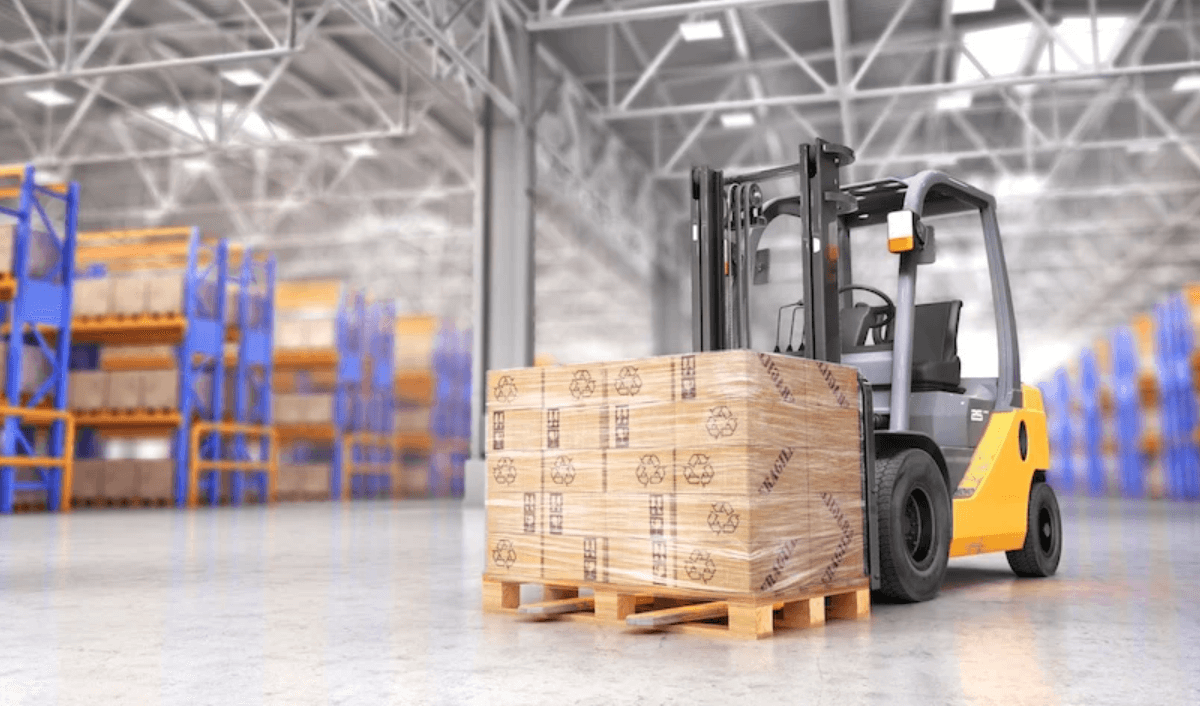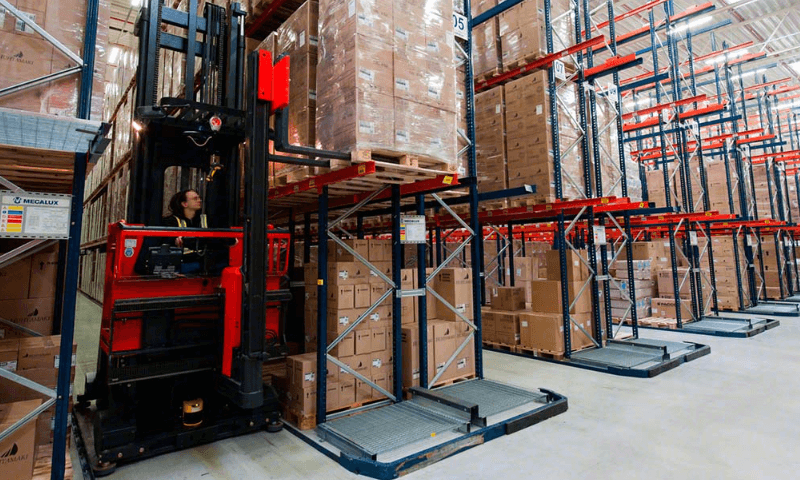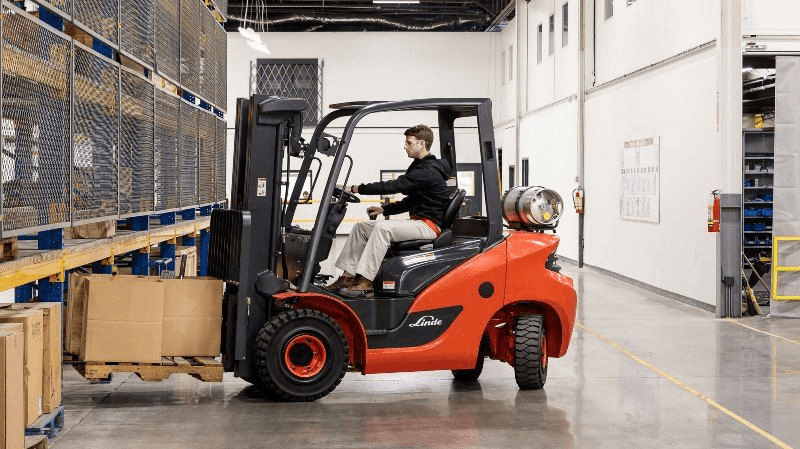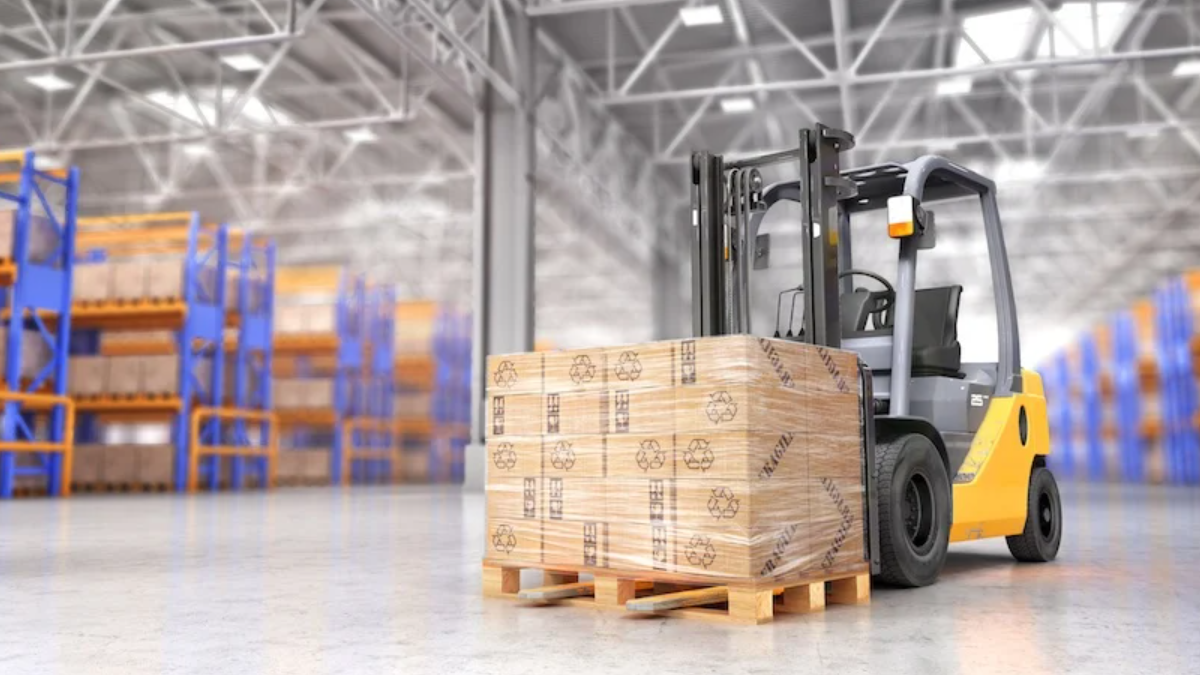
If you manage a warehouse or distribution centre, you should be aware of how crucial it is to have the proper tools for handling, moving, and storing your products. This is where material handling equipment comes in.
Any tool or machine that assists you with these tasks is referred to as material handling equipment (MHE). MHE can be manual, motorised or automated. According to its uses, it’s divided into four primary groups: storage equipment, bulk handling equipment, industrial trucks and automated systems.
Is your goal to optimise your warehouse workflow? Follow along as we look at the different types of material handling equipment in more detail to see how it can improve your efficiency, safety, and productivity.
Storage Equipment
The purpose of these tools and machines is to store items while they are not being used or are waiting to enter the production cycle or be transported. The different types of storage equipment help you optimise your warehouse space and keep your inventory organised. Some examples most commonly found in warehouses include:
- Drawers, bins, and shelves: These are simple storage units that help you store smaller materials in an orderly manner. They are ideal for picking operations and can be combined with labels or barcodes for easy identification.
- Racks: Racks are vertical structures that allow you to store materials on multiple levels, saving floor space and increasing storage capacity. They can be static or dynamic, depending on whether they have rollers or gravity conveyors that facilitate the movement of the materials.
- Stacking frames: Stacking frames are interlocking units that enable you to stack materials without damaging them. They are useful for storing bulky or irregular items that cannot be placed on racks or shelves.
Bulk Handling Equipment
Bulk goods like liquids, gases, grains, coal, or woodchips are transported, stored, and controlled using suitable bulk handling tools. Equipment for handling bulk materials includes, for instance:
- Drums: These are containers that can transport hazardous and non-hazardous industrial commodities in liquid or bulk form. They are generally employed for the storage and transportation of commodities necessary for the delivery of large amounts of freight.
- Stackers: These are tools that assist with lifting and stacking large items on docks and in warehouses. They can be manual or electronic, and they can support the materials with forks or platforms.
- Reclaimers: These are machines that can help recover bulk materials from a stockpile. They have a boom that rotates and buckets or blades that gather up the items and drop them onto a vehicle or a conveyor belt.
- Bucket elevators: These are vertical conveyors that can transport bulk items from one level to another. They are, basically, several buckets connected by a belt, chain, or pulley system.
Industrial Trucks
These are vehicles that help you move large quantities of materials around the warehouse or load and unload them from trucks. They can be manually used or powered by engines or batteries and can be operated by workers from a platform or a cabin. Some examples of industrial trucks are:
- Hand trucks: Hand trucks, also called hand trolleys, are simple devices that help you move heavy materials by leveraging their weight. They can be tilted to slip under the materials and elevate them slightly off the ground. They include two wheels and a handle.
- Sideloaders: Sideloaders can pick up objects from various angles, making them perfect for confined places or narrow aisles. To align with the materials, they can swivel the prongs that protrude from the side of the vehicle.
- Pallet trucks: Pallet trucks can lift and transport pallets or containers. They have forks that slide under the pallets and lift them off the ground. They can be manual or electric and have different capacities and features.
Automated Systems
These systems use technology to automate some or all of the material handling processes in the warehouse. They reduce human intervention and increase speed, accuracy, and safety. Some examples of automated systems are:
- Conveyor belts: Conveyor belt systems transport materials from one location to another using belts, rollers, chains, or wheels. They have various speeds and purposes and can be horizontal, inclined, curved, or spiral.
- Cranes: Cranes are devices that lift and transport materials either vertically or horizontally using cables, hooks, magnets, or claws. They come in different sizes and shapes and can be either fixed or mobile.
- Robots: Robots are mechanical devices that can carry out a variety of material handling operations, including picking, packing, sorting, and palletising. They can be programmed for particular instructions and function individually or in teams.
Choosing the Right Material Handling Equipment for Your Warehouse
As you can see, there is no one type of MHE that works for all warehouses. Depending on your particular needs and goals, each type we covered has pros and cons. As a result, when selecting the appropriate MHE for your warehouse, you need to take into account a number of considerations, including:
- Space and functionality – The kind of equipment you require will depend on the available rack aisle width, rack type, and ceiling height. In general, compact equipment that can work in tighter spaces is more expensive.
- Workers’ safety – Whenever possible, instead of relying on manpower, implement the use of heavy material lifting equipment. This simple step can increase productivity and reduce worker injuries. Also, making sure employees are trained in the upkeep and use of the equipment they utilise can help prevent accidents.
- Maintenance – Invest in tools that are easy to clean and maintain. Additionally. finding equipment with easily replaceable parts will save money by reducing downtime when repairs are required.
- Customisation – You might also take into account any customisation options if you can’t find a piece that satisfies all of your requirements. Ask the supplier if they offer the ability to customise your purchase according to your needs.
A Final Word
The abovementioned pieces are only the very basic items you will need for your warehouse. If you have some more specialised operations or deal with materials that have specific requirements, there’s a plethora of additional MHE you can get. Do your research and compare offers from different warehouse equipment suppliers to make the best decision.
Tim Clarke
Related posts
Stay connected
Today's pick
- The Importance of Professional Handyman Services for Your HomeYour home is your sanctuary, a place of comfort and security, but maintaining it can be a daunting task. From routine maintenance to unexpected repairs, there’s always something that needs attention. While many homeowners might be tempted to tackle these jobs themselves, not all tasks... The post The Importance of Professional Handyman Services for Your […]

